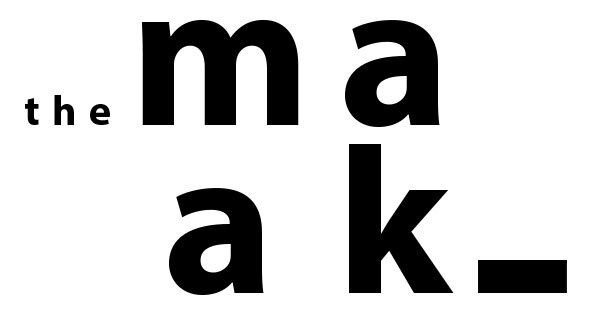Clay, Library, Land Studies
Location: Cape Town, South Africa
‘Clay, Library, Land Studies’ is a cross-disciplinary exhibition that explores memory as an act of making. Collaborative work by The MAAK, photographer Kent Andreasen and artist Zayaan Khan are presented through the narrative of Rahmah Library- a new library facility built by The MAAK for Rahmaniyeh Primary School in District 6, South Africa.
Text by Nkgopoleng Moloi
more after the break ↓
‘Clay as body; Library as vessel of knowledge; Land as body, knowledge, archive, as clay again.’
A collaboration between architectural firm The MAAK (Max Melvill and Ashleigh Killa) and local artists Zayaan Khan and Kent Andreasen, ‘Clay, Library, Land Studies’ was an exhibition staged at Demo Projects in Cape Town during the inaugural Design Week SA in October 2024. This constellation of practices invited reflection on what exhibitions are and what they can be. Through architecture, photography, research, and installation, the exhibition can be read through a series of propositions—connecting past, present and future and offering multiple interpretations of site, while acknowledging layered histories of trauma and resistance.
Once a culturally rich and diverse neighbourhood, District Six was systematically erased under apartheid, its residents forcibly removed, and its buildings flattened in an effort to rewrite the city’s social history and fabric. Yet, despite decades of violence, terror and absence, the land continues to hold memory, resisting erasure. ‘Clay, Library, Land Studies’ reflected on this storied history through a shared inquiry between multidisciplinary artists around the area of District Six. In this instance, the exhibition becomes a space for rehearsal and a meditation on place.
In ‘Clay, Library, Land Studies’ the ground ripples, refusing to remain fixed as each investigation makes way for new imaginings—acts of making, unmaking, and remaking that mirror the continuous negotiation of history and identity within the land itself.
The exhibition’s story begins with an architectural brief to build a new library on the grounds of Rahmaniyeh Primary School. Situated on Constitution Street, Rahmaniyeh has long stood as a marker of resilience, deeply embedded in the community. The project was brought to life by The MAAK through their community-centered approach to design. They led the effort, bringing together Andreasen’s reflective sensitivity and Khan’s intimate knowledge of District Six. This collaborative process allowed for a nuanced engagement with land and memory. For ‘Clay, Library, Land Studies’, Khan presented an installation of work-in-progress tiles made using clay salvaged from District Six. As part of the process, children from the school imprinted these tiles with patterns inspired by dreams they envisioned for their new library—small gestures that expanded the conversation around what the new library could be and how it could feel. The kids spoke of a space for learning, gathering and rest. At the entrance to the school’s new library, similar clay works in the form of bricks have been arranged in a circular formation, embedded as a part of the site — a quiet acknowledgement of continuity and return. Clay, one of the oldest materials known to humankind, holds stories, memory, and the very essence of the land that shapes us. By salvaging and reusing clay from District Six, Khan engages in an act of reclamation—returning to the land that was once taken. The plasticity of clay—its ability to be reshaped and reformed—mirrors the ongoing negotiation of place, and belonging, a quiet but radical gesture toward world-building.
Andreasen’s photographic series deepens this dialogue. Rendering District Six as a landscape of absence, his haunting, unpeopled images speak to histories of dislocation and dispossession. Marked with fingerprints stained by Khan’s salvaged clay, the photographs carry traces of both the land and the hands that have shaped it, not only documenting what was lost but evoking an ongoing process of return, rebuilding and remembrance. This idea of remembrance is central to The MAAK, who view memory as an active, ongoing process—one that must be continually engaged with rather than passively recalled. This ethos explains why the project has taken on multiple forms and iterations over time; the work of memory is never static but something that must be revisited, reshaped and repeated.
In this way, ‘Clay, Library, Land Studies’ does not seek to offer a singular resolution but instead opens up a space for continued reflection—where memory, material, and place remain in flux. The act of making becomes inseparable from the act of remembering, and both are interwoven. Perhaps, then, the exhibition is a reminder that land is neither an archaeological site to be excavated nor a blank canvas upon which new stories are written. Instead, the land is a rippling surface, in the manner that Martinique-born philosopher Édouard Glissant wrote about rippling as trembling—an instinctual feeling that rejects rigidity. In a small but not insignificant way, ‘Clay, Library, Land Studies’ is a gesture of recuperation that acknowledges the past as something not to be overwritten, but as something to be recalled and built into the foundations of new worlds dreamt up by the brave.
Project credit ↓
Photography by Paris Brummer
Text by Nkgopoleng Moloi
Hosted by Demo Projects
Project Partners ↓


























